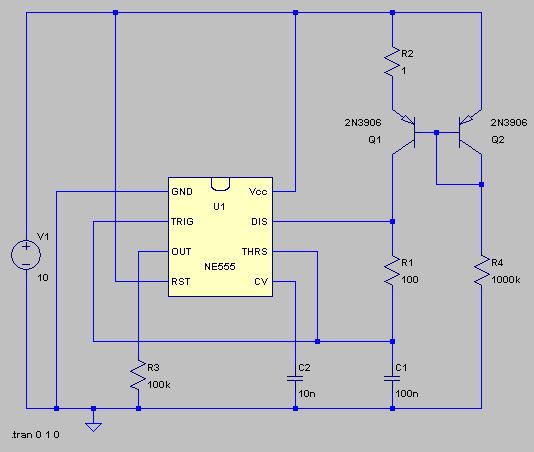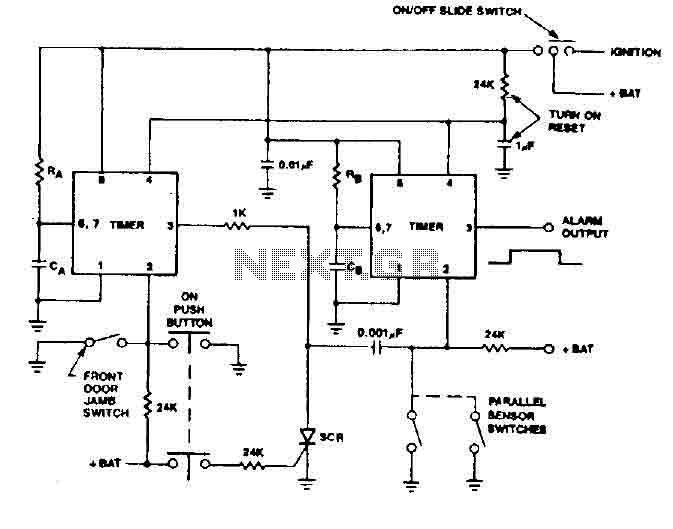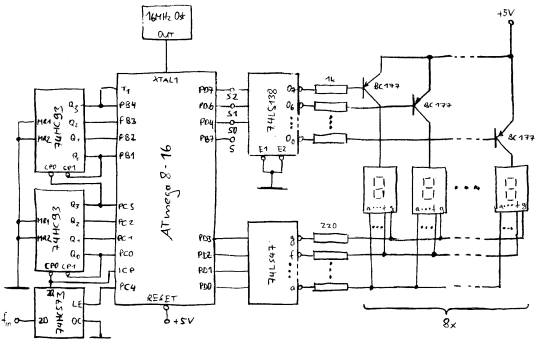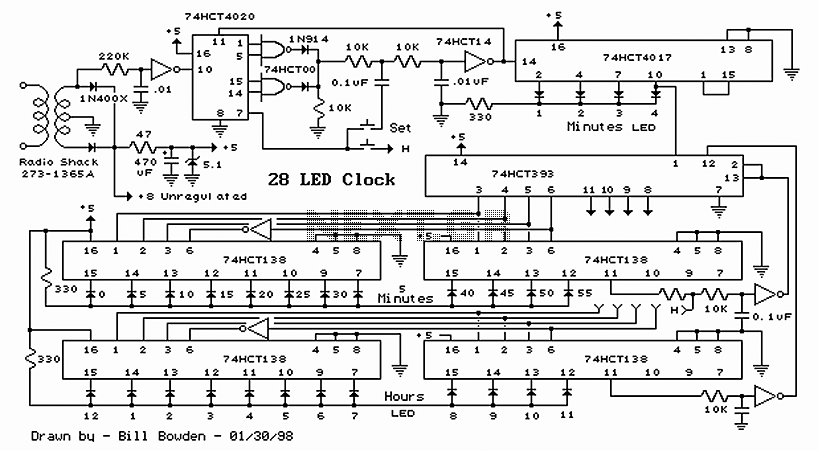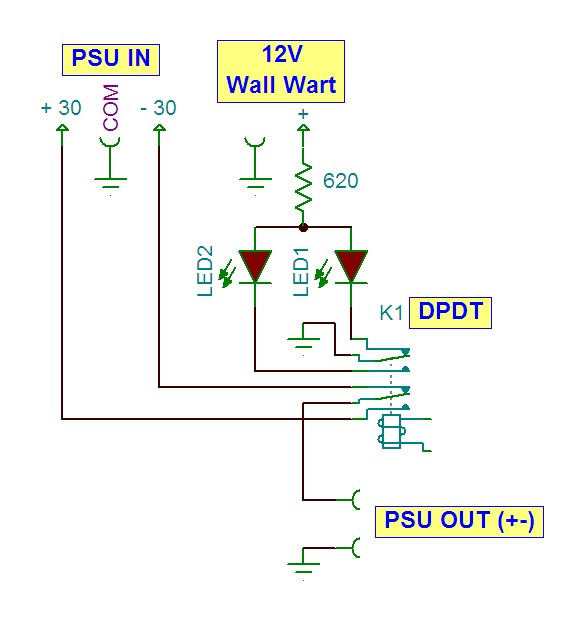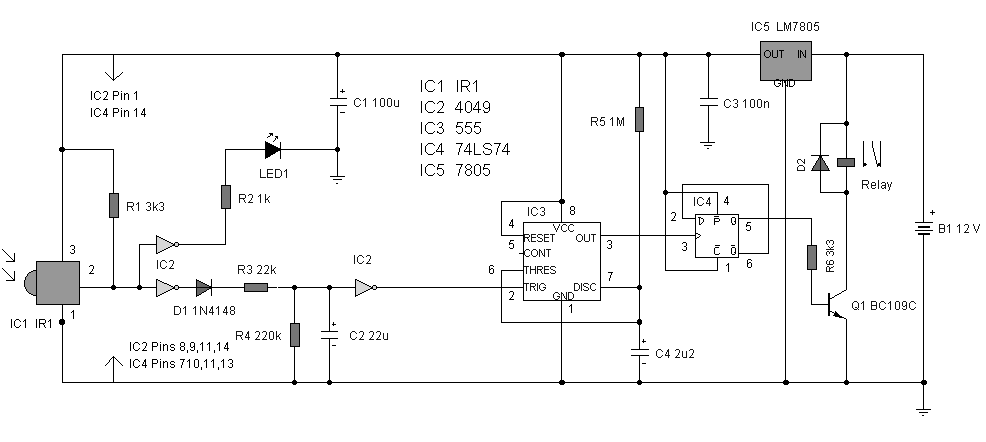
741 Timer
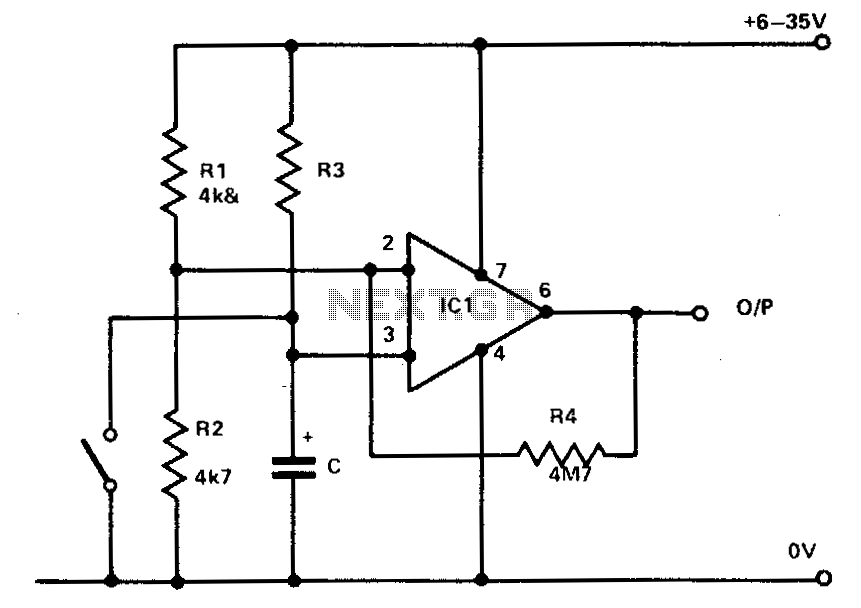
R1 and R2 maintain the inverting input at half the supply voltage. R4 provides feedback to enhance the input impedance at pin 3. Pin 3, which is the non-inverting input, is connected to the junction of R3 and C. Once the switch is opened, capacitor C charges through resistor R3. When the voltage across C is sufficiently high for the potential at pin 3 to surpass that at pin 2, the output transitions abruptly from 0 V to the positive supply voltage. For reverse polarity operation, R3 and C can simply be swapped.
R3 and C can be selected with any values. Time delays ranging from fractions of a second to several hours can be achieved through careful selection. The time delay, which is independent of the supply voltage, is given by the formula T = R3 * C seconds, where C is in farads.
The circuit utilizes operational amplifiers (op-amps) configured in a comparator arrangement. Resistors R1 and R2 form a voltage divider that sets a reference voltage at the inverting input (pin 2) of the op-amp, typically at half of the supply voltage, allowing for effective comparison with the voltage at the non-inverting input (pin 3). The feedback resistor R4 is crucial for maintaining high input impedance, which is essential for accurate voltage detection and minimal loading on the input signal.
The capacitor C, in conjunction with resistor R3, creates a timing circuit that determines the delay before the output changes state. The charging of C through R3 follows an exponential curve, and the time constant (τ = R3 * C) dictates how quickly the capacitor charges to a level that exceeds the reference voltage set by R1 and R2.
This design allows for versatile applications in timing and control systems, where precise delays are necessary. By selecting different values for R3 and C, the circuit can be tailored to meet specific timing requirements. Additionally, the option to reverse polarity by swapping R3 and C adds flexibility to the design, allowing it to be adapted for various operational scenarios.
Overall, this configuration is a robust solution for applications requiring voltage comparison and timing functionality, suitable for use in various electronic systems, including timers, pulse generators, and other control circuits.Rl and R2 hold the inverting input at half supply voltage. R4 applies feedback to increase the input impedance at pin 3. Pin 3, the nonin-verting input, is connected to the junction of R3 and C. After the switch is opened, C charges via R3. When the capacitor has charged sufficiently for the potential at pin 3 to exceed that at pin 2 the output abruptly changes from 0 V to positive line potential. If reverse polarity operation is required, simply transpose R3 and C R3 and C can be any values. Time delays from a fraction of a second to several hours can be obtained by judicious selection. The time delay—independent of supply voltage —is 0CR seconds where C is in farads. 🔗 External reference
R3 and C can be selected with any values. Time delays ranging from fractions of a second to several hours can be achieved through careful selection. The time delay, which is independent of the supply voltage, is given by the formula T = R3 * C seconds, where C is in farads.
The circuit utilizes operational amplifiers (op-amps) configured in a comparator arrangement. Resistors R1 and R2 form a voltage divider that sets a reference voltage at the inverting input (pin 2) of the op-amp, typically at half of the supply voltage, allowing for effective comparison with the voltage at the non-inverting input (pin 3). The feedback resistor R4 is crucial for maintaining high input impedance, which is essential for accurate voltage detection and minimal loading on the input signal.
The capacitor C, in conjunction with resistor R3, creates a timing circuit that determines the delay before the output changes state. The charging of C through R3 follows an exponential curve, and the time constant (τ = R3 * C) dictates how quickly the capacitor charges to a level that exceeds the reference voltage set by R1 and R2.
This design allows for versatile applications in timing and control systems, where precise delays are necessary. By selecting different values for R3 and C, the circuit can be tailored to meet specific timing requirements. Additionally, the option to reverse polarity by swapping R3 and C adds flexibility to the design, allowing it to be adapted for various operational scenarios.
Overall, this configuration is a robust solution for applications requiring voltage comparison and timing functionality, suitable for use in various electronic systems, including timers, pulse generators, and other control circuits.Rl and R2 hold the inverting input at half supply voltage. R4 applies feedback to increase the input impedance at pin 3. Pin 3, the nonin-verting input, is connected to the junction of R3 and C. After the switch is opened, C charges via R3. When the capacitor has charged sufficiently for the potential at pin 3 to exceed that at pin 2 the output abruptly changes from 0 V to positive line potential. If reverse polarity operation is required, simply transpose R3 and C R3 and C can be any values. Time delays from a fraction of a second to several hours can be obtained by judicious selection. The time delay—independent of supply voltage —is 0CR seconds where C is in farads. 🔗 External reference
